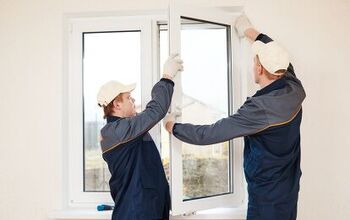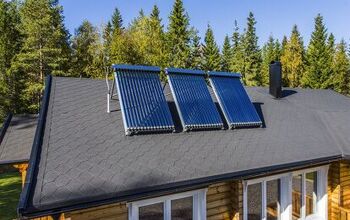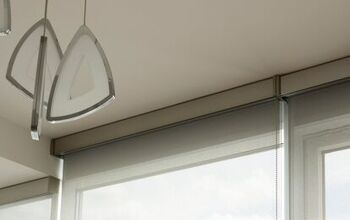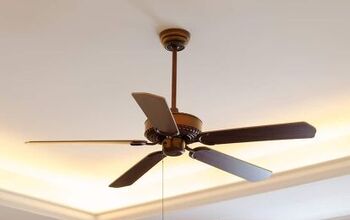Solar Screens or Window Tinting: Which One Is Better?

According to the American Physical Society, approximately 13% of energy costs in a home go directly towards regulating the temperature in the home. To help reduce both heat and energy costs, a homeowner may choose to install solar screens or apply tinting to their windows. However, how do you know which is better – solar screens or window tinting?
Although both options prevent the sun’s harmful UV rays from entering the home, thus reducing heating and cooling costs, solar screens tend to be the most effective choice.
When installed on the exterior of the home, solar screens block 90% of the sun’s heat. They also offer versatility, allowing you to raise and lower the screens based on your needs. Whereas, with window tinting, the same amount of sun is blocked year-round. While you’ll enjoy less heat and light during the hot summer months, you’ll have to compensate during the winter by operating your heater more.
Before you move forward with installing one over the other, you should understand the characteristics of each and their individual pros and cons. That way, you can make an informed decision whether solar screens or window tinting is the best choice for your windows.
Do You Need Window Tinting Services?
Get free, zero-commitment quotes from pro contractors near you.

What Are Solar Screens?
A solar screen, sometimes referred to as sun screen, is a fabric-based product that is installed either on the interior or exterior of the home to prevent the sun’s UV rays from getting into the home. The fabric they are made of also helps prevent people from seeing into your home during the day and aids in glare reduction.
These screens may be made of a variety of materials, including fiberglass, polyester, polyvinyl, and more. Though, most solar screens are a woven mesh material and are available in a variety of colors.
Exterior solar screens are considered to be the most energy-efficient option, deflecting brightness and blocking approximately 90% of the sun’s heat before it hits the window. The screen absorbs 70% of the heat, while an additional 10% is reflected and the remaining 10% dissipates due to the screen’s airflow.
In fact, exterior solar screens can cool down a room by approximately 15 degrees. They are installed on the outside of the home and do not touch the window. Some of the main benefits you can expect with solar screens are as follows:
- Installation does not void window warranties.
- Prevent solar heat from entering the home without touching your windows.
- Can be operated whether your windows or open or closed.
- Can be raised or lowered to control the heat and light that enters your home.
- Reduces heating bills during winter months.
- Available in a variety of opacities based on your needs and preferences.
The Openness Factor
Openness, when it comes to solar screens, describes the amount of light that is let in through the shade. The tightness of the fabric weave is what gives the shade its specific percent variation of openness. You can choose between 0% to 20% openness, in three distinct levels:
- Low openness (3-5%) features the tightest weave and blocks the most light from the sun. As such, it also provides the most privacy, and has the lowest visibility for viewing from the interior to the outdoors.
- Medium openness (7-10%) offers a better “view-through” experience, but still blocks plenty of the sun’s UV rays that could heat up your home and damage furnishings.
- High openness (14%) has the best view through of all the levels, offering excellent glare reduction.
Solar Screen Limitations
Using interior solar screens means that the heat will still enter your home. Powerful solar screens installed on the inside will reflect the heat, but the heat will still get into the home. This reduces the effectiveness of the screen itself.
With exterior solar screens, you have to deal with them being affected by the elements. These screens typically last about 10 years before they need to be replaced due to damage caused by weather.
What Is Window Tinting?
As opposed to being a physical screen, window tinting is a thin, laminate film that is applied to your home’s windows. Similar to the tint you have your sunglasses or potentially your vehicle, window tinting diffuses UV rays, reducing the interior temperature, blocking the glare of the sun, and preventing damage to your furniture.
Window tints are typically made of a mixture of polyester and other dyed, metal-coated substances. Like solar screens, tints come in a range of colors to give you plenty of options for your interior look. They are installed directly onto the interior of your glass windows, offering the following benefits:
- Prevents fading and photobleaching of furnishings.
- Reduces cooling costs during summer months.
- Strengthens the structural integrity of your windows.
Window Tint Limitations
Of course, like solar shades, there are some drawbacks to choosing window tinting. For starters, window tinting provides the same level of UV ray blocking year-round. This means that while your home will enjoy less heat and light in the summer, it will have to compensate for this heat loss in winter months by running the heater more often.
Not to mention, in some cases, window tinting can void window warranties and isn’t recommended for all types of windows. Finally, with tinted windows, you have to choose between either having the sun blocked or opening your window – you can’t have both at the same time.
Do You Need Window Tinting Services?
Get free, zero-commitment quotes from pro contractors near you.

Cost Comparison
To have solar screens professionally installed, most homeowners spend between $120 and $480 per window. Of course, this estimate can go up based on the size and type of your windows. Although this may seem like a high upfront cost, solar screens will save you more money over the course of the time they are in place. In fact, solar screens can reduce your electricity bills by 25% to 35% a month, making them the more cost-effective option of the two.
Meanwhile, window tinting typically costs around $5 to $8 per square foot, depending on the size and number of windows you have. Most homeowners pay between $311 and $712 to have window tinting performed by a professional. Since window tinting doesn’t provide the best in terms of energy efficiency, you won’t enjoy the same cost savings on your energy bills as you would with solar screens.

Jessica considers herself a home improvement and design enthusiast. She grew up surrounded by constant home improvement projects and owes most of what she knows to helping her dad renovate her childhood home. Being a Los Angeles resident, Jessica spends a lot of her time looking for her next DIY project and sharing her love for home design.
More by Jessica Stone















![12 Washing Machine Brands to Avoid [with Recall Data]](https://cdn-fastly.upgradedhome.com/media/2023/07/31/9075781/12-washing-machine-brands-to-avoid-with-recall-data.jpg?size=350x220)











